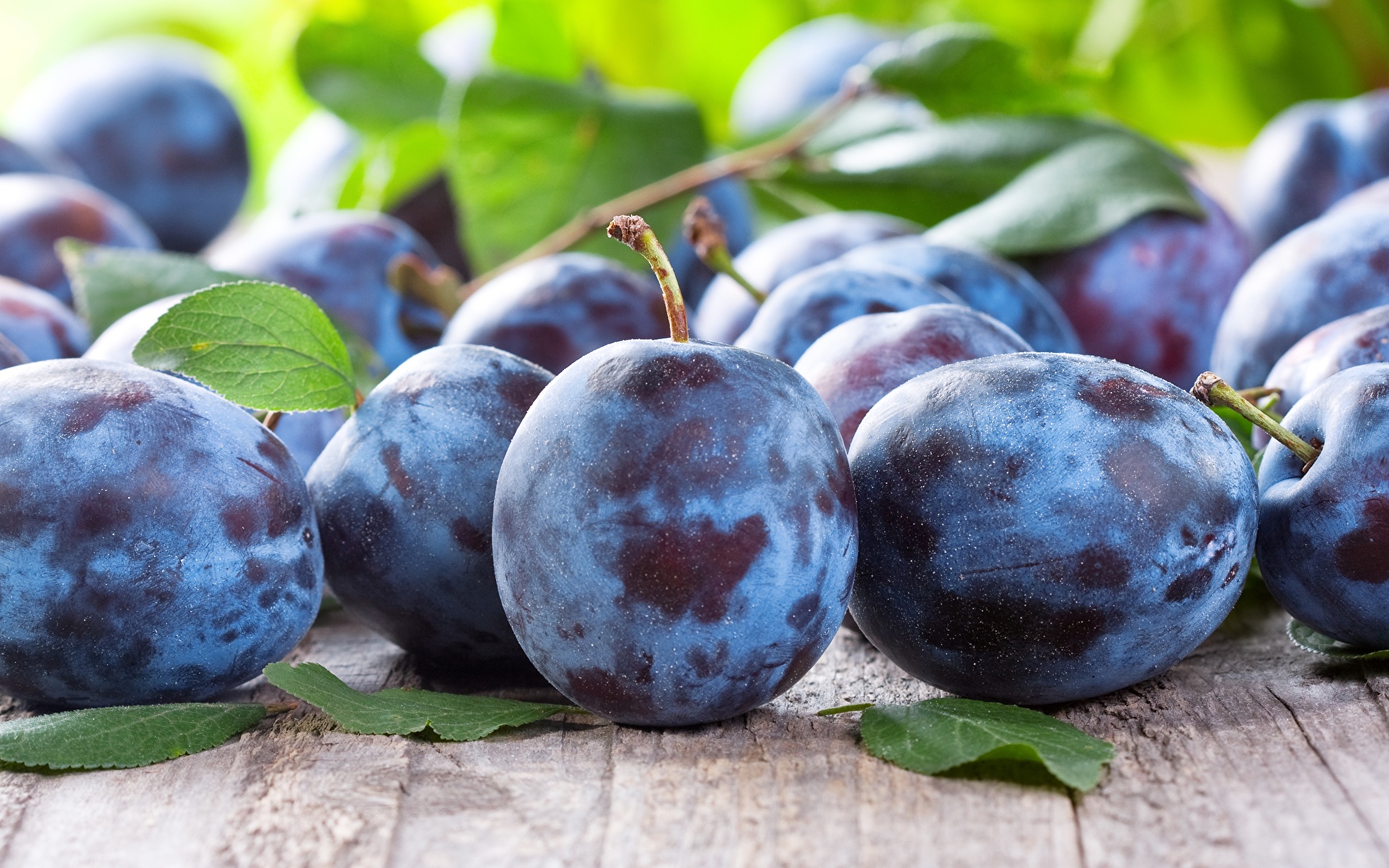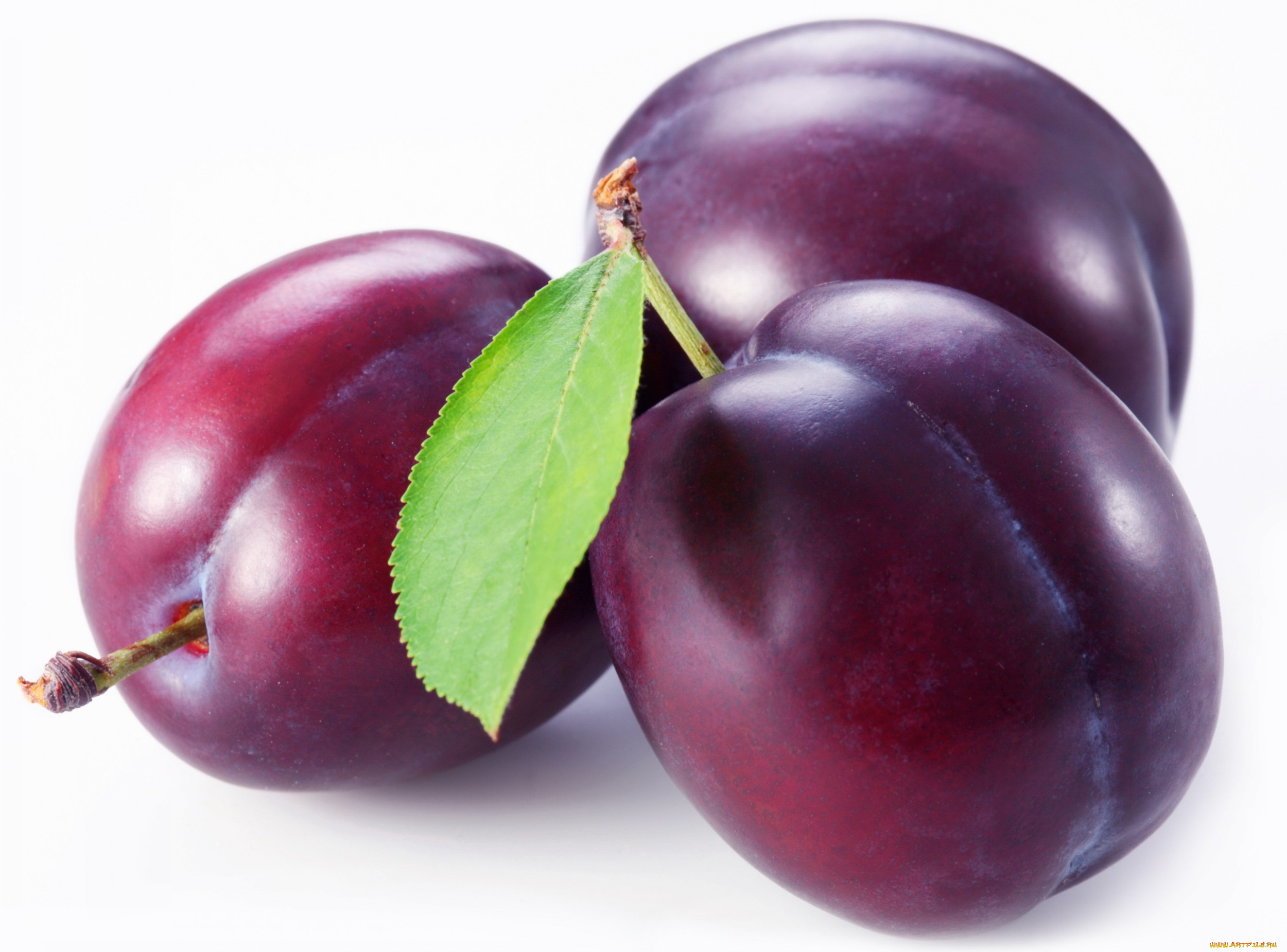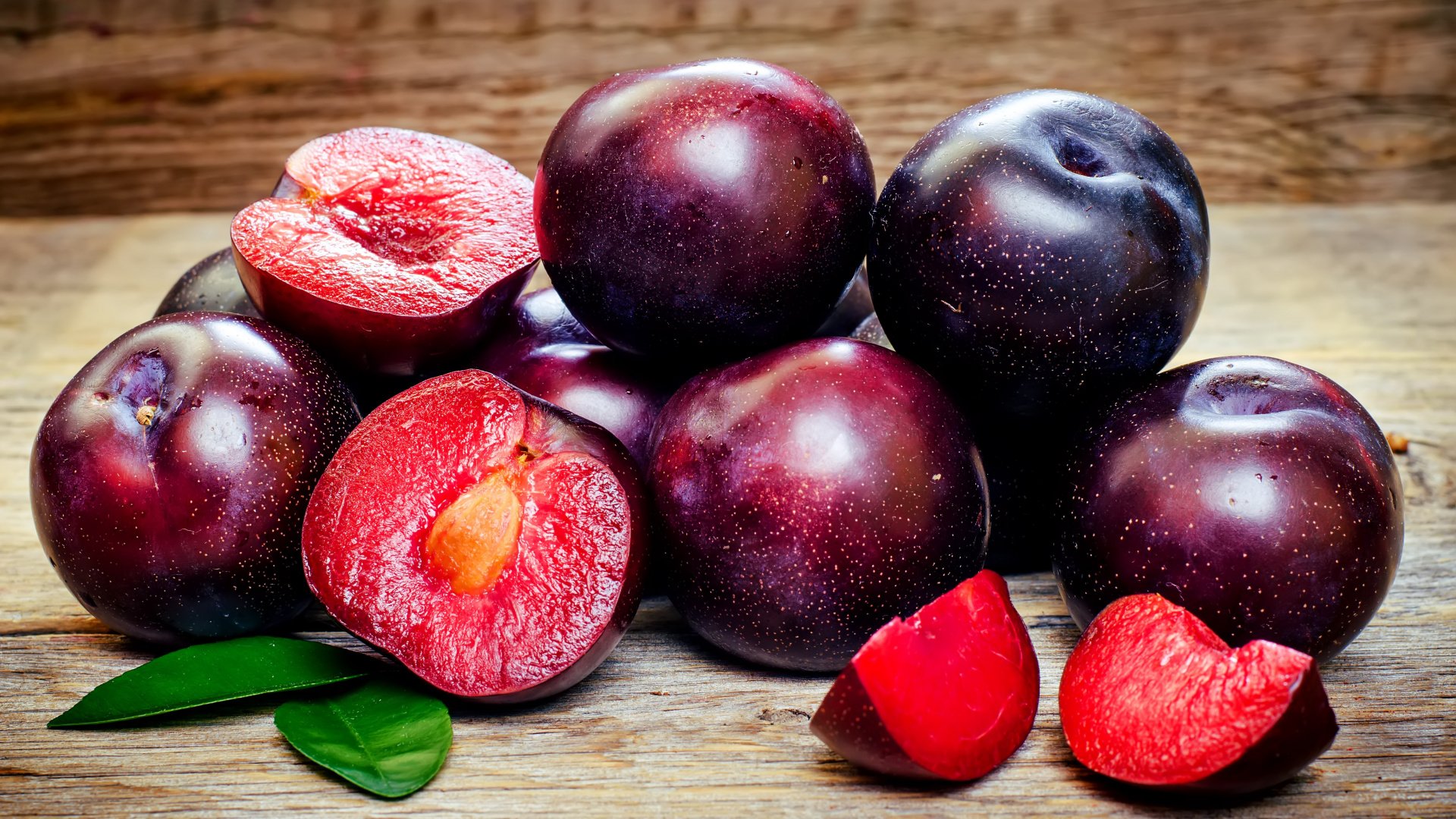Plum properties and benefits for humans
Plums are extremely nutritious, with a variety of health benefits to offer. They contain many vitamins and minerals, in addition to fiber and antioxidants that may help reduce your risk of several chronic diseases. Plums are a medium-sized stone fruit. The most popular variety has a dark purple-red skin with yellow flesh inside, both of which are edible. You can also find plums that are green-yellow. All varieties have a stone in the centre of the fruit that is not edible. When dried, plums are known as prunes.

1. Nutrients
Plums are impressively high in nutrients. They contain over 15 different vitamins and minerals, in addition to fiber and antioxidants.
Plums are relatively low in calories, but contain a fair amount of important vitamins and minerals. Plum contains the following nutrients:
Calories;
Carbs;
Fiber;
Sugars;
Vitamin A;
Vitamin C;
Vitamin K;
Potassium;
Copper;
Manganese.
Additionally, one plum provides a small amount of B vitamins, phosphorus and magnesium.
Plums also contain a good mix of vitamins and minerals, especially calcium, which ensures blood clots normally; magnesium, which can help to manage the symptoms of stress and reduce fatigue, and folate, which helps the body to form healthy red blood cells. Plums also contain vitamin C, which helps with wound healing, and carotene, which converts to vitamin A and helps to support the normal function of the immune system.
Plums are relatively low in calories, but contain a fair amount of important vitamins and minerals. Plum contains the following nutrients:
Calories;
Carbs;
Fiber;
Sugars;
Vitamin A;
Vitamin C;
Vitamin K;
Potassium;
Copper;
Manganese.
Additionally, one plum provides a small amount of B vitamins, phosphorus and magnesium.
Plums also contain a good mix of vitamins and minerals, especially calcium, which ensures blood clots normally; magnesium, which can help to manage the symptoms of stress and reduce fatigue, and folate, which helps the body to form healthy red blood cells. Plums also contain vitamin C, which helps with wound healing, and carotene, which converts to vitamin A and helps to support the normal function of the immune system.
Plums are naturally high in fruit sugars such as glucose, fructose and sucrose. As with all fruit, the body processes sugar quickly for energy, but this can be slowed down if it’s eaten with some protein – in the form of nuts and seeds, for example – which helps slow the release of the sugars.
The average plum weighs about 78g and contains around 7.4g sugars, so it is not a high-sugar food. With all the vitamins and minerals plums contain, there are plenty of reasons to be eating them when they are in season.
The average plum weighs about 78g and contains around 7.4g sugars, so it is not a high-sugar food. With all the vitamins and minerals plums contain, there are plenty of reasons to be eating them when they are in season.
2. Reduce Cell Damage
The vitamin C in a plum provides certain health benefits. Vitamin C is an important water-soluble vitamin that is responsible for repairing cells, supporting the immune system, and slowing down the aging process.
Plums also contain phytonutrients, particularly phenols, which have antioxidant effects. Antioxidants may help prevent cell damage that may lead to cancer, cardiovascular diseases, neurodegeneration, and aging.

3. Heart Health
Plums contain soluble fiber, which is known for being cardio-protective and helpful in reducing bad cholesterol. Plum consumption is associated with improved cognitive function, bone health parameters, and cardiovascular risk factors.

Varieties
There are two main types of plums: European plums and Japanese plums. There are also many different varieties within those two categories.
In the U.S., European plums are most commonly found in stores. European plums are usually blue but can come in a variety of colors, such as red and black. The flesh color may vary from yellowish-gold to reddish-purple. The greengage plum remains green when ripe.
European plums are sometimes dried and eaten as prunes. Prunes are produced by drying special plum varieties, usually the French Agen. Nutrition information for prunes is different than it is for plums—even though prunes come from plums. A 66-gram serving of prunes contains about 159 calories, 42 grams of carbohydrate, over 25 grams of sugar, about 1.5 grams of protein, and less than a gram of fat.
Japanese plums can be round or heart-shaped and also come in a range of colors. Japanese plums are usually not suitable for drying because they contain less sugar.
In the U.S., European plums are most commonly found in stores. European plums are usually blue but can come in a variety of colors, such as red and black. The flesh color may vary from yellowish-gold to reddish-purple. The greengage plum remains green when ripe.
European plums are sometimes dried and eaten as prunes. Prunes are produced by drying special plum varieties, usually the French Agen. Nutrition information for prunes is different than it is for plums—even though prunes come from plums. A 66-gram serving of prunes contains about 159 calories, 42 grams of carbohydrate, over 25 grams of sugar, about 1.5 grams of protein, and less than a gram of fat.
Japanese plums can be round or heart-shaped and also come in a range of colors. Japanese plums are usually not suitable for drying because they contain less sugar.